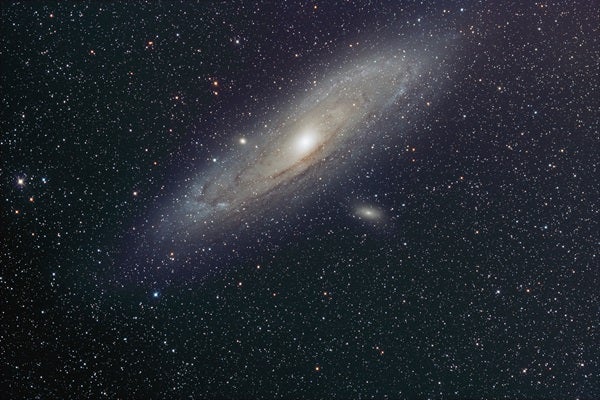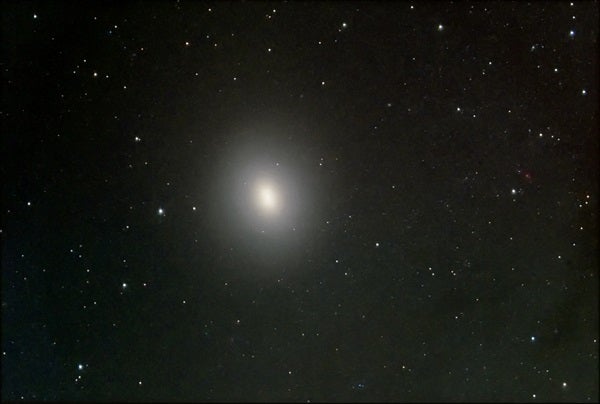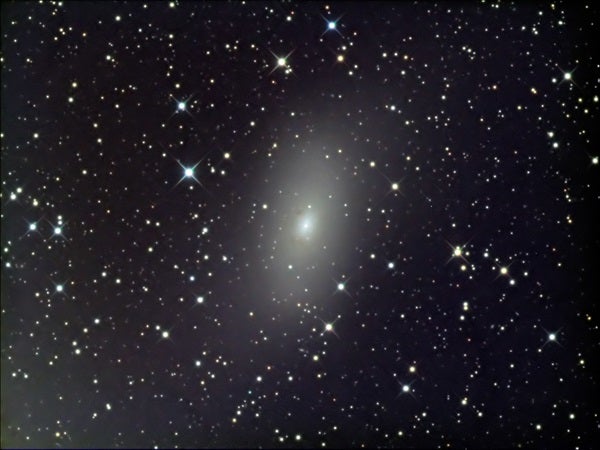How many times has someone asked you, “What’s the farthest thing you can see with your eyes?” Me? I’ve long lost track. But my stock answer is always the same, the Andromeda Galaxy (M31). Unless you are under very dark, very transparent skies, Andromeda is it, at 2.5 million light-years away. That’s an incredible distance when you stop and think about it. The light we see tonight, traveling at more than 186,000 miles every second, took 2.5 million years to reach your eyes.
What was going on here on Earth when that light left the Andromeda Galaxy? Well, for one, we weren’t. Humans — that is, Homo sapiens — weren’t even around. No, 2.5 million years ago, our evolutionary ancestors known as Homo habilis made their first appearance. And they had a tough time of it back then, too. That was also the beginning of the Pleistocene epoch, which saw repeated global glaciations.
Ice ages and an Earth populated by half-human, half-ape creatures — that was the state of affairs when the light we are seeing tonight left M31. And yet, there it is, weakened by the trip to appear as a small, fuzzy patch just off Nu (ν) Andromedae. Isn’t it amazing that we can see it with just our eyes?
The Andromeda Galaxy is also well known as M31, the 31st entry in French astronomer Charles Messier’s catalog. Messier bumped into it for the first time on August 3, 1764. Historical records, however, show that Persian astronomers observed it as far back as a.d. 905.
Good binoculars expand the faint blur of M31 into a distinctly football-shaped disk measuring a full 5°. That’s as wide as 10 Full Moons stacked end to end, and probably about the same width as your binocular’s field of view.
At first glance, you may only see the galaxy’s bright, central core. But with patient observation and using averted vision, the full extent of the spiral arm disk will become more apparent. Giant binoculars even add subtle texture and irregularities to the disk, as well as a hint of the galaxy’s two dark dust lanes bisecting lengthwise.
While you are gazing at M31, keep an eye out for its two neighbors, M32 and NGC 205. M32, the smaller and brighter of the pair, looks like a small smudge due south of M31’s core.
NGC 205 is larger, but also fainter. Spotting it can be very challenging. First, brace your binoculars against something to steady the view, then look for its dim glow northwest of M31’s core. It’s about twice as far away as M32 is to the core’s south.
M32 and NGC 205 are great examples of dwarf elliptical galaxies, the most common type of galaxy in the universe. M32 appears almost perfectly round and is referred to as an E2 elliptical. NGC 205 is an E6 elliptical galaxy for its more oblate profile. M32 and NGC 205 are the two brightest of as many as 10 companion galaxies associated with M31. The others are too small and faint to be visible through most binoculars.
But they are slowly getting brighter. So are M31, M32, and NGC 205. Slowly — very slowly! That’s because they are all headed our way. In fact, M31 and our Milky Way are on a collision course. Studies show that gravity is pulling them toward each other at a rate of about 75 miles (120 kilometers) per second. At that speed, it’s going to take about 4 billion years for the two to collide and merge. Some call the end result Milkomeda. While it is unlikely that the Sun will collide with another star, things here will be getting dicey for other reasons. In 4 billion years, the Sun will be running out of fusible hydrogen in its core. So, while Milkomeda is just evolving into existence, the Sun will be starting its slow departure. Just as our distant ancestor Homo habilis lived in interesting times, so will our far future generations — though life on Earth may last only a billion years, until the water is gone due to the Sun’s increasing radiation.
Back to today. We all have favorite binocular objects. I’d enjoy hearing about yours, and possibly feature them in future columns. Contact me through my web site, philharrington.net.
Until next month, remember that two eyes are better than one.













